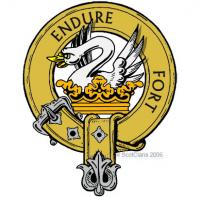
Clan Lindsay
Between the 6th and 9th centuries, Danes lived in one of the little kingdoms of Lincolnshire in England to which, after the Norman Conquest, Baldric of Lindsay came to be tenant of the manors under the Earl of Chester.
The Lindsay name was already well known across England at this time. In 1120 Sir Walter Lindsay was a member of the council of David, Earl of Huntingdon in England, who became King of Scots in 1124. Sir Walter’s successor, either his son or brother William, came to Scotland with the new King.
William Lindsay acquired Crawford in Lanarkshire and gave some of his Ayrshire land to Dryburgh Abbey.
In the following century Sir David Lindsay of Crawford and the Byres supported St Louis, King of France, on a crusade. He died in Egypt. By then the family had expanded prosperously on both sides of the border and the war of independence brought them great dilemmas.
One of the Crusader’s sons, Sir Alexander, was a Knight of Edward I of England. Nonetheless, his Scottish patriotism made him a supporter of Bruce and friend of Wallace. His English property was forfeited and his sons were imprisoned. The eldest of these sons, Sir David, was later among the signatories of the ‘Declaration Of Arbroath’, the 1320 assertion of Scottish independence.
A loss of Lindsay land in Scotland resulted from long time feuding with the Ogilvies when the 4th Earl of Crawford, Alexander, known both as the ‘Tiger Earl’ and ‘Earl Beardie’ was badly defeated at Brechin in 1452.
Another Alexander, son of the 8th Earl, was known as ‘The Wicked Master’ and had his land, position and inheritance removed after being convicted of trying to murder his father.
In the numerous struggles to retain a Scottish Crown the Lindsays have been active all through British history.







